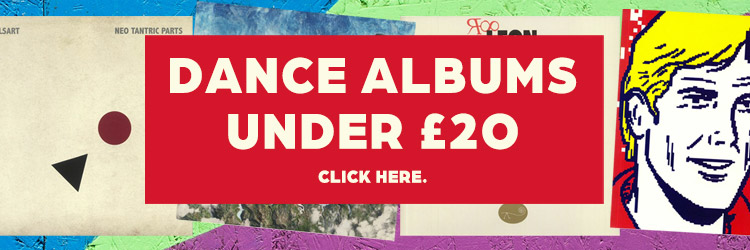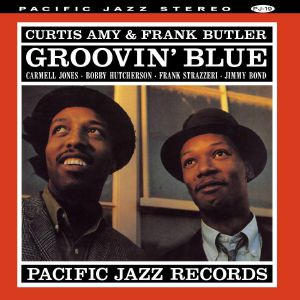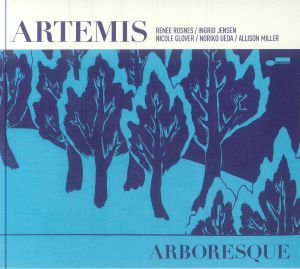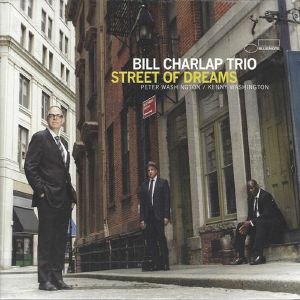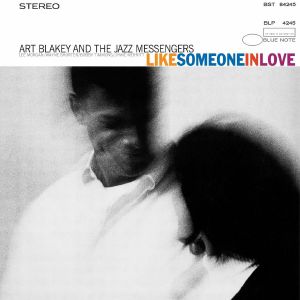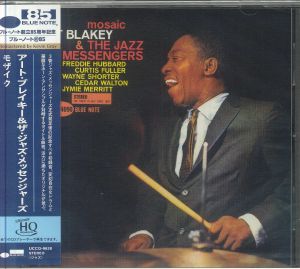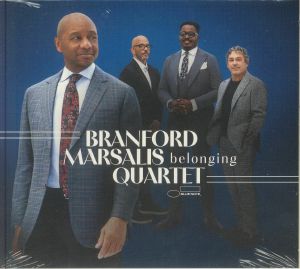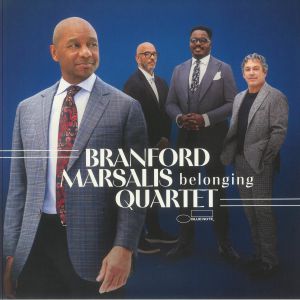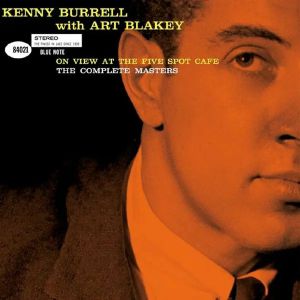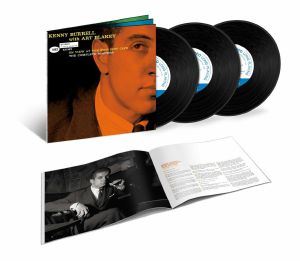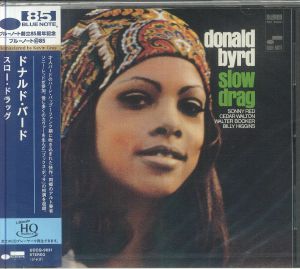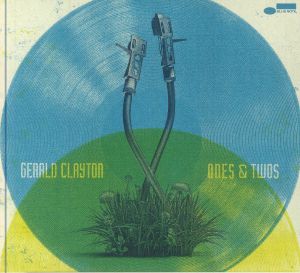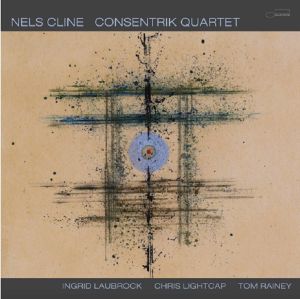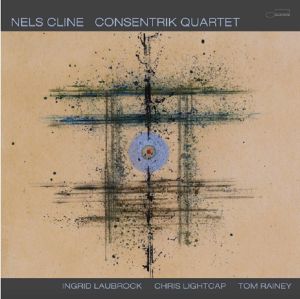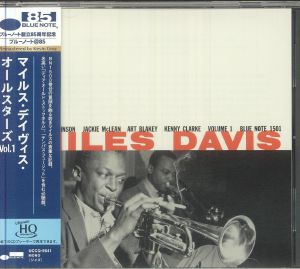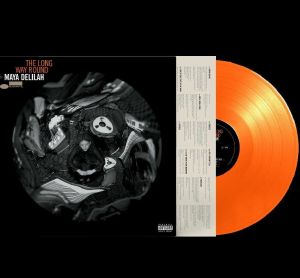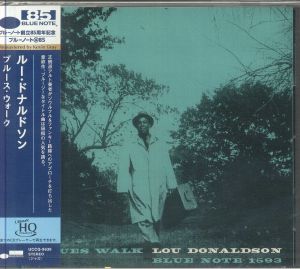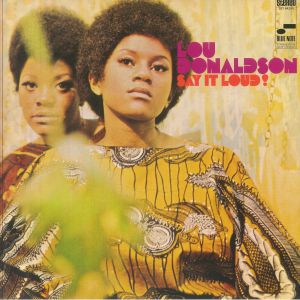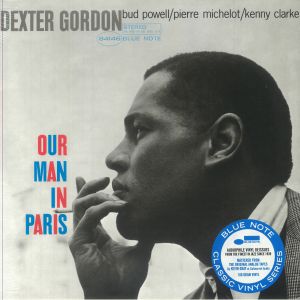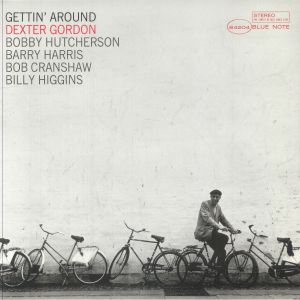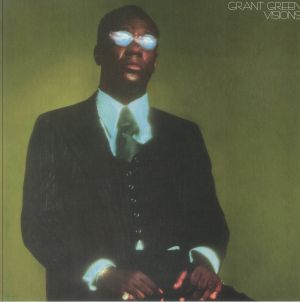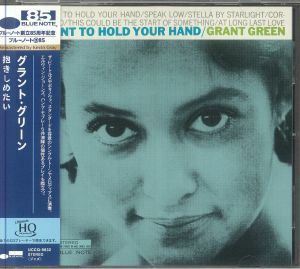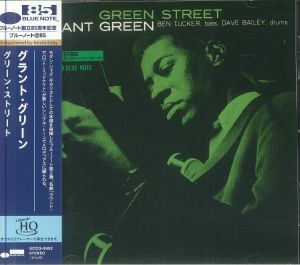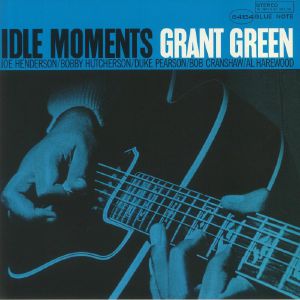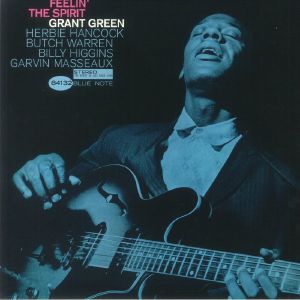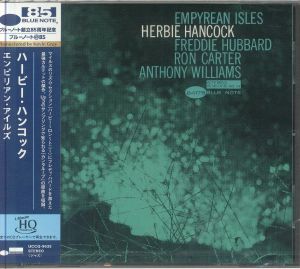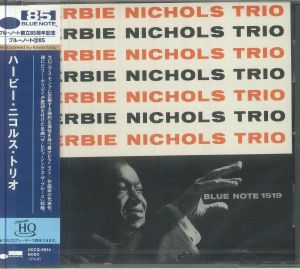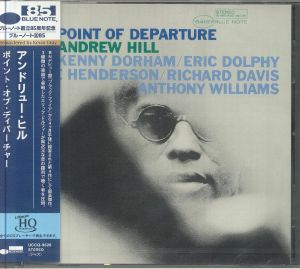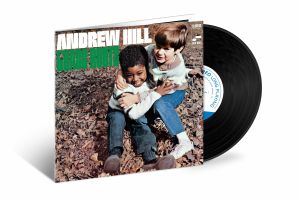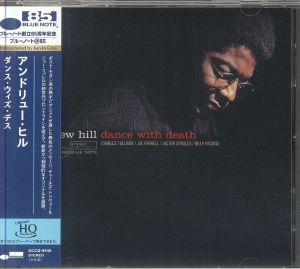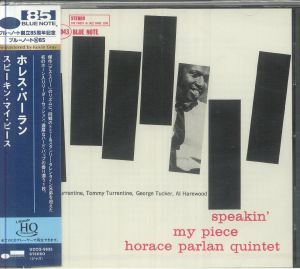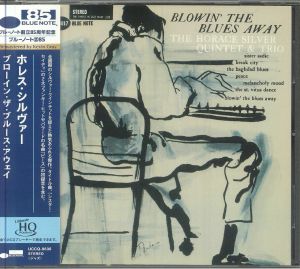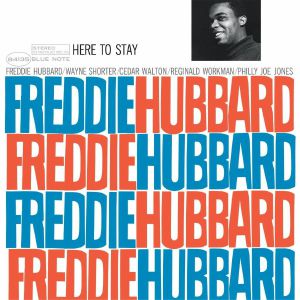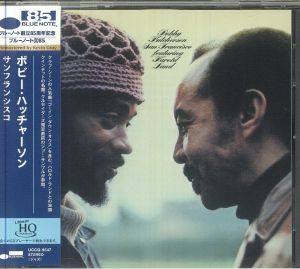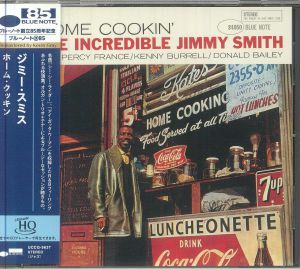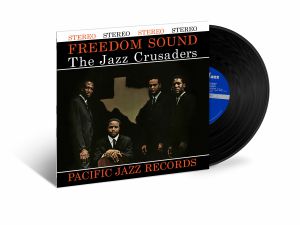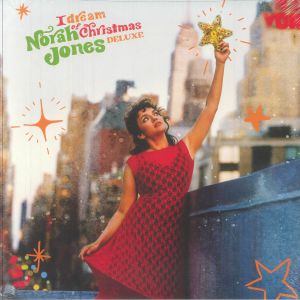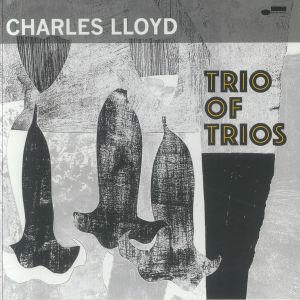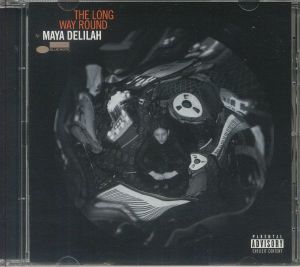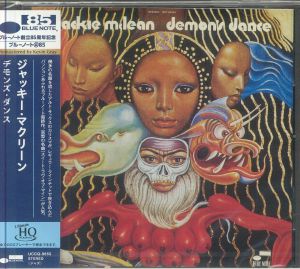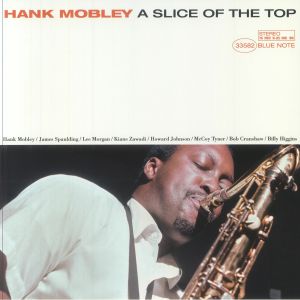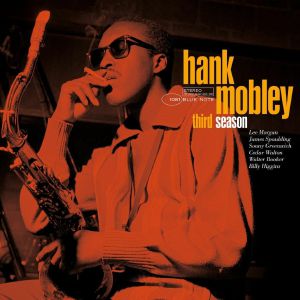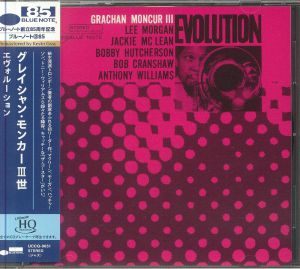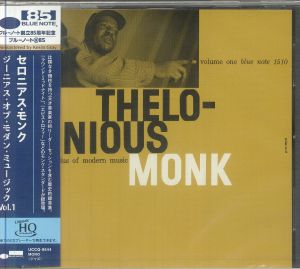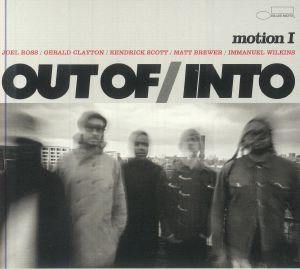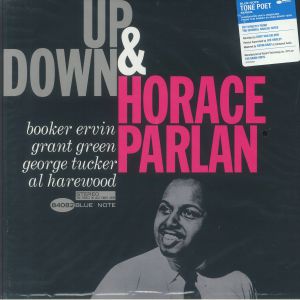Filter
Stock
Music
Artist
Label
Featured
Release Title
Price
Back catalogue: Funk Soul & Jazz
Juno's full catalogue of Funk Soul & Jazz
Álbumes
Groovin' Blue (Tone Poet Series) (180 gram audiophile vinyl LP + insert)
Cat: 554214 5. Rel: 06 Mar 25
Review: Human novae of the 1950s jazz circuit in Hollywood, Curtis Amy and Frank Butler imploded the local scene at the turn of the swinging decade when they began to record for local label Pacific Jazz. Laid down in a single session at the PJ studio, Groovin' Blue is a timeless and idiosyncratic experiment in jazz, its specialty being tss-tss rhythms, unhindered lead instrumental melisma, sax counterpoint, and smackout drum fills and solos from Butler, which more than transcended the strictures of the swing form of the time. Also hearing vibraphonist Bobby Hutcherson, who was just 19 years old at the time of this recording, this excellent six-song set is perfect for those audiophiles keen on the interesting intersection of blues and jazz.
… Read more in stock $39.28
Review: Fresh off their second consecutive win as "Jazz Group of the Year" in the DownBeat Readers Poll, Artemis returns with their third Blue Note album. Featuring a quintet lineup helmed by pianist and musical director Renee Rosnes, this all-female supergroup unites some of the most pre-eminent voices in modern jazz. Trumpeter Ingrid Jensen, saxophonist Nicole Glover, bassist Noriko Ueda and drummer Allison Miller bring their individual brilliance to a vibrant set of original compositions and inspired arrangements. 'The Smile Of The Snake' slithers with a captivating energy, while 'Komorebi' shimmers with delicate beauty. 'Footprints', a Wayne Shorter classic, receives a fresh and invigorating interpretation, while Burt Bacharach's 'What The World Needs Now Is Love' is transformed into a poignant ballad. From the intricate interplay of Jensen's trumpet and Glover's saxophone to the driving rhythms of Ueda and Miller, this album showcases a remarkable synergy between five exceptional musicians at the top of their game.
… Read more in stock $30.98
in stock $13.84
in stock $29.05
Like Someone In Love (Classic Vinyl Series) (180 gram vinyl LP)
Cat: 651496 4. Rel: 16 Jan 25
Review: Recorded during the same intense August 1960 sessions that produced another iconic album, this release showcases the brilliance of a hard-bop quintet, combining fiery improvisation with introspective ballads. The album opens with a standard tune that became a regular feature in the group's live sets, setting the stage for a collection of original compositions. Lee Morgan's 'Johnny Blue' stands out with its infectious blues line, while Wayne Shorter's compositionsiparticularly 'Sleeping Dancer Sleep On'ireveal his growing mastery of melody and complex chord changes. The track is a highlight, with lush, gospel-funky piano and a slow, stunning waltz rhythm. Shorter's 'Noise in the Attic' is a powerful drum showcase, allowing for blistering solos from the horns but placing special emphasis on the piano work. 'Giants', another Shorter composition, closes the album with a hard-bop anthem that keeps the energy high and steady throughout. While Blakey typically dominates with his high-energy drumming, here he takes a more restrained role, allowing the melodies to breathe. The synergy of the quintet is palpable, with Bobby Timmons' percussive piano providing a dynamic counterpoint to the horn lines.
… Read more in stock $29.05
Mosaic (remastered) (UHQ-CD with obi-strip)
Cat: 589038 6. Rel: 28 Feb 25
in stock $18.80
in stock $14.12
in stock $39.28
Kenny BURRELL with ART BLAKEY
Cat: 759581 1. Rel: 24 Apr 25
Review: By the time Kenny Burrell took the stage at the Five Spot Cafe in August 1959, he had already 90-degree head-turned his best jazz fellow travellers with a glissando of Blue Note LPs. But this gig, his first live date as a leader, brought a new kind of magic. Contracting Art Blakey, Tina Brooks, Roland Hanna, Bobby Timmons, and Ben Tucker on band duties, Burrell confidently executed a suite of hard bop soaked in sweat, swing, and soul. This 3xLP brings that steamy summer evening back to life in full analogue detail; housed in a tip-on trifold jacket with an accompanying booklet of rare Francis Wolff photos, an essay by Syd Schwartz, and new reflections from Burrell himself, it's a vivid snapshot of a moment when everything clicked.
… Read moreIntérprete: Juno Recommends Jazz
in stock $15.22
Kenny BURRELL with ART BLAKEY
On View At The Five Spot Cafe: The Complete Masters (Tone Poet Series) (gatefold 3xLP + booklet)
Cat: 750228 1. Rel: 24 Apr 25
Intérprete: Juno Recommends Jazz
in stock $80.78
in stock $16.59
in stock $14.12
Review: Dutch-born American jazz pianist and composer Gerald Clayton is back with a sixth album, his second on Blue Note. Ones & Twos is another exploration of jazz, hip-hop, neo-soul and raw improvisation that is all rooted in a deep conceptual framework. Featuring standout collaborators like Joel Ross, Elena Pinderhughes, Kendrick Scott and Kassa Overall, the album moves effortlessly from groove to abstraction and is inspired by turntablism, which is why Clayton created two sets of tracks that can play individually or simultaneously, blurring the line between harmony and dissonance. As rich as the sonics are, there is also real philosophical intent here, making it both a visceral and cerebral listen with layered commentary on collaboration, coexistence and creativity.
… Read moreIntérprete: Juno Recommends Jazz
in stock $29.86
Review: Chicago rock band Wilco's guitarist - a highly prolific jazz maestro in his own right - brings us his latest full length album. A hypnotic groove anchors the lead single, propelling a hard-driving yet fluid interplay between guitar and saxophone. The composition brims with urgency, each phrase unfolding with elegant harmonic tension and a deep jazz sensibility. The quartet's chemistry is undeniable, balancing structured intensity with moments of free-flowing improvisation. Echoes of classic Blue Note recordings by Andrew Hill and Eric Dolphy surface in the phrasing, while the interplay recalls the front-line dynamism of Joe Lovano and John Scofield's collaborations. Yet, the sound remains singular, shaped by a deep appreciation for Brooklyn's improvised music scene. Across the album, the group explores a vast emotional and textural rangeiat times bracing and kinetic, elsewhere delicate and atmospheric. The rhythm section locks into compelling grooves, allowing melodies to breathe and evolve organically. The guitarist's mastery is evident, seamlessly shifting from shimmering chord voicings to fiery, exploratory runs. This is a love letter to both jazz tradition and the limitless potential of improvisation, where every note serves the collective momentum.
… Read more in stock $40.39
in stock $14.12
in stock $17.70
Review: A multifaceted personality, 24-year-old breakout folk star Maya Delilah shares The Long Way Round on Decca Records, fresh off the back of a Spotify "One To Watch" award. "I get so influenced by different genres, people, places, and experiences that it's always felt hard for me to fit my music into a consistent sound or mood," the singer said in a statement. Forerun by the likes 'Squeeze' and 'Necklace', Delilah's vocals are breathy and her backing instrumentals smooth, tinged with the torrid strokes of Ayers-esque sunshine funk. Recorded between LA and London, the record flags up themes from cyclical relationships to predestination, with Delilah feeling that the record expresses a future nostalgia for someone she's never met before.
… Read more in stock $28.50
in stock $17.70
Say It Loud (Classic Vinyl) (gatefold 180 gram vinyl LP)
Cat: 651497 0. Rel: 20 Mar 25
Review: Lou Donaldson's Say It Loud! is a classic of the late 60s soul-jazz movement, combining infectious grooves with a lineup of skilled musicians. Released in 1969 on Blue Note, this album highlights California-based Donaldson's expertise on the alto saxophone, blending hard-swinging bebop roots with a funkier, dance-driven approach. The title track, inspired by James Brown's anthem, is a cool, laid-back rendition that shows his nuanced playing alongside the solid rhythms of trumpeter Blue Mitchell, guitarist Jimmy Ponder, organist Charles Earland, and drummer Leo Morris. The album shines with its extended tracks like 'Snake Bone' and 'Brother Soul', where the soloists stretch out, creating moments of tension and release. Ponder's blues-infused guitar solos and Earland's dramatic organ builds are standouts. While the bossa nova rendition of 'Summertime' and the swinging 'Caravan' bring a more traditional jazz feel, the album is most vibrant when it grooves hard. Despite being somewhat overshadowed by Donaldson's earlier work, Say It Loud! remains a highly enjoyable and essential part of his legacy. It may not carry the same weight as Midnight Creeper, but its infectious rhythms and tasteful solos ensure its place as a classic in soul-jazz, deserving of a greater appreciation which this reissue celebrates.
… Read moreIntérprete: Craig Charles Funk And Soul
in stock $29.86
Sunset Eyes (Tone Poet Series) (180 gram audiophile vinyl LP)
Cat: 556006 8. Rel: 03 Apr 25
Review: An album that defined the "cool" in West Coast Jazz when it emerged in 1960, it's a robust, swinging session led by the veteran Los Angeles-based tenor saxophonist. Edwards' smooth tone in the middle and lower registers, combined with a brassier edge in the upper range, showS his melodic inventiveness and dynamic fluidity. The primary rhythm section features Leroy Vinnegar on bass and Billy Higgins on drums, with either Amos Trice or, more often, Joe Castro on piano. Higgins, fresh off sessions with Ornette Coleman, locks into a straight-ahead groove, with the entire rhythm section swinging relentlessly. Pianists Trice and Castro bring a bebop-plus-barroom feel reminiscent of Sonny Clark, adding grit and charm to the quartet's sound. The program is largely blues and bebop-flavored originals, with several based on the chord changes of 'I've Got Rhythm'. The title track introduces a Latin flair, while Vinnegar's 'Vintage '57' offers variety.A pivotal moment in West Coast jazz when Edwards, once obscure, reemerged with vigour.
… Read more in stock $39.82
Our Man In Paris (Classic Vinyl Series) (180 gram audiophile vinyl LP)
Cat: 651496 7. Rel: 20 Feb 25
Review: Super cool jazz cat Dexter Gordon's 1963 album Our Man in Paris marked his first release from Europe and is often regarded as the final bebop album. The saxophonist gathered a quartet featuring bebop legends Bud Powell on piano and Kenny Clarke on drums and they played alongside French bassist Pierre Michelot to record this timeless work at CBS Studios in Paris. The album is defined by Gordon's commanding saxophone with the intricate rhythms of bebop that take you right back to a precise moment of musical history which marked a significant transition in jazz. It remained a defining work in Gordon's career.
… Read moreIntérprete: Juno Recommends Jazz
in stock $30.98
Gettin' Around (Classic Vinyl Series) (180 gram audiophile vinyl LP)
Cat: 651036 8. Rel: 14 Nov 24
Review: Dexter Gordon's 1965 album Gettin' Around captures the essence of his refined, effortless saxophone playing, coming at a time when he was back in the States after a long stint in Europe. The vibe here is smooth and unhurried, with Gordon's tenor sax at the centre of it all, surrounded by a standout crew: vibraphonist Bobby Hutcherson, pianist Barry Harris, bassist Bob Cranshaw, and drummer Billy Higgins. This unique instrumentation really shines, especially with the interplay between Gordon and Hutcherson on tracks like 'Manha De Carnival' and 'Shiny Stockings.' The whole session feels relaxed yet precise, with Gordon letting his sax sing while the band provides subtle yet nuanced backing. Highlights include the gentle swing of 'Everybody's Somebody's Fool' and the more upbeat 'Le Coiffeur,' both showcasing the group's tight but easy-going chemistry. Reissued as part of the Blue Note Classic Vinyl Series, this edition stays true to its analogue roots, mastered by Kevin Gray from the original tapes and pressed on heavyweight 180g vinyl. For fans of Gordon or classic Blue Note, it's a must-have.
… Read moreIntérprete: Juno Recommends Jazz
in stock $31.82
Visions (Classic Vinyl Series) (180 gram audiophile vinyl LP)
Cat: 651486 1. Rel: 12 Dec 24
Review: Grant Green's Visions, released in 1971, dives into r&b and jazz-funk with an all-star lineup including Billy Wooten, Chuck Rainey, and Idris Muhammad. Green's signature tone and melodic style transform tracks from The Jackson 5, Chicago, The Carpenters, Mozart, and Quincy Jones' 'Maybe Tomorrow,' later sampled by Kendrick Lamar. This Blue Note Classic Vinyl Edition captures the original stereo mix, mastered by Kevin Gray from analog tapes, pressed on 180g vinyl at Optimalia soulful essential for collectors and fans of jazz-funk's golden era.
… Read more in stock $30.98
I Want To Hold Your Hand (remastered) (UHQ-CD with obi-strip)
Cat: 589039 2. Rel: 27 Feb 25
in stock $19.64
in stock $17.70
Idle Moments (reissue) (B-STOCK) (180 gram audiophile vinyl LP)
Cat: 357991 0 (B-STOCK). Rel: 01 Jan 90
B-STOCK: Sleeve damaged but otherwise in excellent condition
in stock $20.91
Feelin' The Spirit (Tone Poet Series) (remastered) (B-STOCK) (limited gatefold 180 gram audiophile vinyl LP)
Cat: B 003348801 (B-STOCK). Rel: 01 Jan 90
B-STOCK: Sleeve split at the top but otherwise in excellent condition
Review: ***B-STOCK: Sleeve split at the top but otherwise in excellent condition***
Blue Note's Tone Poets series is all about celebrating some of the greatest jazz guitarists, reissuing their seminal albums as a nod to virtuoso talent. Grant Green's 1963 album Feelin' The Spirit consisted of jazz arrangements of traditional African American spirituals such as 'Nobody Knows The Trouble I've Seen' and 'Sometimes I Feel Like A Motherless Child'. Given the historical weight of the music, it's no surprise to hear Green soaring high as he expresses the songs through his guitar, but as if that wasn't enough he's backed up by Herbie Hancock on piano, Butch Warren on bass and Billy Higgins on drums.
… Read moreBlue Note's Tone Poets series is all about celebrating some of the greatest jazz guitarists, reissuing their seminal albums as a nod to virtuoso talent. Grant Green's 1963 album Feelin' The Spirit consisted of jazz arrangements of traditional African American spirituals such as 'Nobody Knows The Trouble I've Seen' and 'Sometimes I Feel Like A Motherless Child'. Given the historical weight of the music, it's no surprise to hear Green soaring high as he expresses the songs through his guitar, but as if that wasn't enough he's backed up by Herbie Hancock on piano, Butch Warren on bass and Billy Higgins on drums.
in stock $33.86
in stock $16.59
Herbie Nichols Trio (Japanese Edition) (UHQ-CD with obi-strip)
Cat: 589039 6. Rel: 21 Feb 25
The Gig
House Party Starting
Chit-Chatting
The Lady Sings The Blues
Terpsichore
Spinning Song
Query
Wildflower
Hangover Triangle
Mine
in stock $19.64
Point Of Departure (Japanese Edition) (UHQ-CD with obi-strip)
Cat: 589038 4. Rel: 21 Feb 25
Refuge
New Monastery
Spectrum
Flight 19
Dedication
in stock $17.70
Grass Roots (reissue) (Tone Poet Series) (gatefold 180 gram vinyl LP)
Cat: 551876 9. Rel: 17 Jan 25
Review: Andrew Hill's 1968 release merges intricate rhythms with dense, harmonically rich compositions that push the boundaries of jazz. The ensemble, featuring Lee Morgan and Booker Ervin, dives into challenging material that unfolds with every listen. The intricate brass work on tracks like 'Grass Roots' contrasts with the fluidity of Hill's piano, while the rhythm section locks into an effortlessly tight groove. Hill's compositions are complex yet absorbing, blending intellectual depth with emotional resonance, creating a unique sonic landscape that rewards careful listening.
… Read moreIntérprete: Kaoru Inoue
in stock $41.22
in stock $19.64
Speakin' My Peace (remastered) (UHQ-CD with obi-strip)
Cat: 589039 7. Rel: 27 Feb 25
in stock $19.64
Blowin' The Blues Away (remastered) (UHQ-CD with obi-strip)
Cat: 589039 8. Rel: 28 Feb 25
in stock $16.59
Here To Stay (Classic Vinyl Series) (180 gram audiophile vinyl LP)
Cat: 651496 5. Rel: 16 Jan 25
Review: Recorded in 1962, this album captures Hubbard at the peak of his powers, his fiery trumpet soaring alongside a stellar lineup that includes Wayne Shorter, Cedar Walton, Reggie Workman and Philly Joe Jones. From the explosive opener, 'Philly Mignon', to the tender beauty of 'Body and Soul', the album showcases Hubbard's versatility and masterful command of the trumpet. This all analogue reissue, mastered by Kevin Gray from the original master tapes, really captures the energy and intimacy of this classic session.
… Read more in stock $29.60
in stock $16.59
Home Cookin' (remastered) (UHQ-CD with obi-strip)
Cat: 589040 0. Rel: 28 Feb 25
in stock $17.70
Freedom Sound (Tone Poet Series) (180 gram vinyl LP)
Cat: 551877 5. Rel: 17 Jan 25
Review: The Jazz Crusaders' Freedom Sound blends hard bop and soul-jazz in a way that feels both fresh and timeless. The band delivers a tight, energetic performance, with each member adding their distinct touch to the album's punchy grooves. The horns are sharp and emotive, while the rhythm section locks in with precision, creating a perfect backdrop for the solos. Tracks like 'The Thrust' showcase their ability to seamlessly merge complexity with accessibility, making this a standout album that defines their early sound. It's a work that thrives on its energy and bold experimentation.
… Read more in stock $39.28
in stock $30.98
in stock $30.98
in stock $68.21
in stock $14.12
Demon's Dance
Toyland
Boo Ann's Grand
Sweet Love Of Mine
Floogeh
Message From Trane
in stock $17.44
A Slice Of The Top (Tone Poet Series) (reissue) (gatefold 180 gram audiophile vinyl LP)
Cat: 550597 8. Rel: 05 Dec 24
Review: Hank Mobley's A Slice of the Top, recorded in 1966, is Mobley's nod to Birth of the Cool, blending hard bop with Duke Pearson's brilliant arrangements. With an expanded octet featuring unique additions like euphonium and tuba alongside a stellar lineupiJames Spaulding on alto sax, Lee Morgan on trumpet, McCoy Tyner on piano, Bob Cranshaw on bass and Billy Higgins on drumsithe album is a richly layered experience. This Tone Poet Vinyl Edition, produced by Joe Harley and mastered by Kevin Gray from original tapes, arrives on 180g vinyl in a deluxe gatefold tip-on jacket.
… Read more in stock $36.24
Third Season (Tone Poet Series) (gatefold 180 gram audiophile vinyl LP)
Cat: 554214 6. Rel: 13 Mar 25
Review: Recorded in 1967, this jazz classic is a quintessential hard bop album that proves why the tenor saxophonist's signature sound was so influential. The seven-piece band includes alto saxophonist James Spaulding, trumpeter Lee Morgan, guitarist Sonny Greenwich, pianist Cedar Walton, bassist Walter Booker and drummer Billy Higgins and the ensemble's tight chemistry and individual virtuosity shine throughout the album with Mobley's smooth yet dynamic saxophone leading the way. A blend of intricate solos and rich ensemble passages, Third Season is a standout example of the era's high-calibre jazz and one that captures the spirit of the late 60s perfectly.
… Read more in stock $39.28
Evolution (remastered) (UHQ-CD with obi-strip)
Cat: 589717 8. Rel: 28 Feb 25
in stock $19.64
in stock $19.64
in stock $14.38
Review: This release feels like a collision of worlds, where abstract textures and rhythmic intricacies are forced into a dialogue with more accessible forms of electronic music. The opening track sets a tone of strange, mysterious propulsion, yet never fully gives in to any familiar conventions. Instead, it hints at a narrative unfoldingia journey, almost, where sound and intention coalesce but never fully resolve. It's a slow burn that rewards those who stick around, offering complex layers that reveal themselves gradually. Far from merely experimental, it finds a rare balance between artifice and soul, making each sonic twist feel purposeful and immersive.
… Read more in stock $28.76
Up & Down (Tone Poet Series) (gatefold 180 gram vinyl LP)
Cat: 551877 1. Rel: 06 Feb 25
Review: This Tone Poet Vinyl Edition presents Horace Parlan's quintessential hard bop quintet session. Known for his work with Charles Mingus, Parlan shines alongside George Tucker, Al Harewood, Grant Green, and Booker Ervin. The music swings with an effortless groove, showcasing Parlan's bluesy piano stylings and the band's tight interplay. Mastered from the original analogue master tapes by Kevin Gray, this reissue captures the warmth and vibrancy of the original recording. A must-have for any fan of hard bop and classic Blue Note sounds.
… Read moreIntérprete: Juno Recommends Jazz
in stock $42.33

 USD
USD




